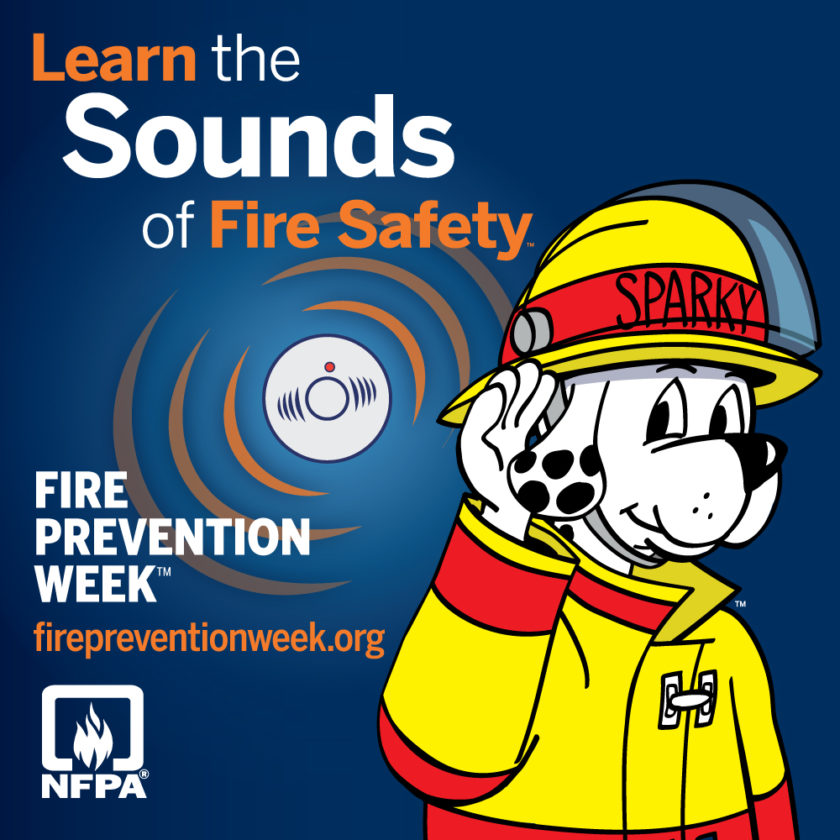Fire Prevention Week: “Learn the Sounds of Fire Safety™”
Every October, the National Fire Protection Association® (NFPA®) promotes a theme for Fire Prevention Week, this year October 3-9. The message for 2021 is “Learn the Sounds of Fire Safety,TM” and it includes the important goal of educating everyone about the sounds of their smoke and carbon monoxide alarms.
When an alarm makes noise—a beeping sound or a chirping sound—it is doing it for a reason. Make sure everyone in the home understands the sounds of the alarms and knows how to respond. To learn the sounds of your specific smoke and carbon monoxide alarms, check the manufacturer’s instructions that came in the box, or search the brand and model online.
“Knowing when you need to escape versus when you need to change the battery is an important distinction that can save you, your home, and your family,” said Valley Regional Fire Authority Deputy Chief Dave Larberg.
While some products may have slight differences, there are a few things everyone should know about the sounds smoke and CO alarms make:
- A continuous set of three loud beeps—beep, beep, beep—means smoke or fire. Get out, call 9-1-1, and stay out.
- A single chirp every 30 or 60 seconds means the battery is low and must be changed.
- All smoke alarms must be replaced after 10 years.
- Chirping that continues after the battery has been replaced means the alarm is at the end of its life and the unit must be replaced.
- Make sure your smoke and CO alarms meet the needs of all your family members, including those with sensory or physical disabilities. Smoke alarms and alert devices are available for people who are deaf or hard of hearing. These devices include strobe lights that flash to alert people when the smoke alarm sounds. Pillow or bed shakers designed to work with your smoke alarm also can be purchased and installed.
If your alarm is chirping due to a low battery or some other issue, it is extremely important to return the unit to full working order as soon as possible. Hearing a continuous chirp can lead some people to hesitate or ignore the warning sounds of an alarm when there is an actual emergency. Additionally if the unit is faulty, it needs to be replaced as soon as possible.
The Valley Regional Fire Authority can offer free replacement nine-volt batteries for smoke alarms, and in some cases, free alarms. The batteries are supplied through a grant from the Energizer Company and the alarms from World Vision and Costco Corporation.
Additional Smoke and Carbon Monoxide Tips
Replace smoke and carbon monoxide alarm batteries annually to avoid low battery “chirping”
- To replace the battery, unscrew the alarm from the mounting bracket, open the battery compartment, remove the old battery and insert a new one, checking to be sure the polarity (plus+ and minus- signs) are correct.
- Press the test button on the front of the alarm to be sure it works, then replace the alarm in the mounting bracket.
- Smoke and carbon monoxide alarms with non-replaceable batteries (long-life) batteries are designed to remain effective for up to 10 years. If these alarms chirp, warning that the battery is low, replace the entire alarm as soon as possible.
Replace smoke alarms after 10 years, even if they appear to be working
- When purchasing alarms, be sure they are approved by a nationally recognized third party testing laboratory such as Underwriters Laboratory (UL) or Intertek (ETL).
- Install alarms with both photoelectric and ionization sensing technology. Photoelectric alarms are best for detecting smoldering fires and for false alarm prone areas. Ionization alarms are best at detecting flaming fires.
